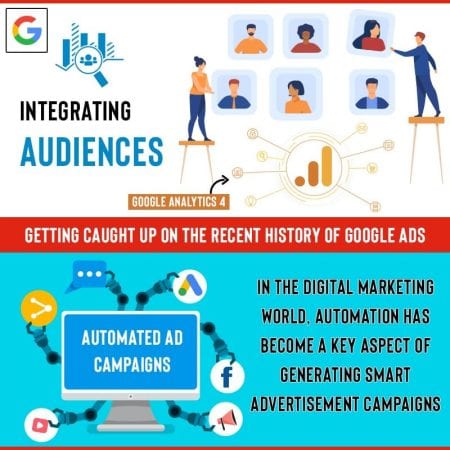 2020 is a year that marks several anniversaries, one of which is the 20th birthday of Google Ads. Now that may not sound like a big deal, but you may change your mind when you think about just how integrated into life Google Ads have become. In recent years, internet advertising has gone through several massive changes and redesigns. The increase in mobile traffic, integration of shopping ads and free posts, and the number of Google Ads options have all had a major impact on how consumers interact with the internet. In this article, we’ll be going over a brief history of the last five years of google ads, and what that history can tell us about the future of internet marketing.
2020 is a year that marks several anniversaries, one of which is the 20th birthday of Google Ads. Now that may not sound like a big deal, but you may change your mind when you think about just how integrated into life Google Ads have become. In recent years, internet advertising has gone through several massive changes and redesigns. The increase in mobile traffic, integration of shopping ads and free posts, and the number of Google Ads options have all had a major impact on how consumers interact with the internet. In this article, we’ll be going over a brief history of the last five years of google ads, and what that history can tell us about the future of internet marketing.
Integrating Audiences
First, there were first-party targeting products that were launched by Facebook and Twitter, however, in 2015, Google came out with Customer Match. This was a step beyond the website retargeting of the past and instead catapulted Google into audiences. The success of this program further ushered in the era of audience targeting, affinity, and in-market tracking. This trend isn’t going away any time soon either. In 2020, Google came out with predictive audiences, which uses Google Analytics 4 to track the probability of a customer making a purchase.
The Fall of the Keyword
For years, the king of search engine optimization was the keyword. However, in recent years, Google has completely redesigned how it uses keywords and search matches. This change has forced advertising companies, businesses, and marketers to re-evaluate their strategies and how they write copy and design web pages. One of the key changes has been in the privacy expectations and policies of consumers and search engines.
As recently as the past few months, Google Ads started limiting the number of search terms that it releases for advertisers to see. This change has changed how advertising copy is designed and even marketed. Nowadays, Google only releases keywords that are used by “a significant number of users”.
This has come at the same time as an increase in the number of close variants. This expansion has meant even more complications when it comes to developing effective keywords. Ever the creative problem solvers, advertisers have adapted to using negative keyword management over more traditional approaches.
The Rise of Automation
2018 was the year that automated ad campaigns really came into their own, according to results obtained by Universal App Campaigns analytics. Automation used to be mainly an aspect of management, or a buzz word in new stories about the downfall of manufacturing jobs. In the digital marketing world, however, automation has become a key aspect of generating smart advertisement campaigns.
In combination with responsive search ads, which were introduced the same year, automated Google Ads campaigns are now one of the easiest ways to reach more customers. Especially for businesses on a budget. Automated Google Ads campaigns are run over multiple Google-owned platforms simultaneously to reach a broader audience.
Online vs. Offline
If 2020 is going to be remembered for anything, it’s probably going to be the coronavirus pandemic. While this has led to an undeniable surge in online shopping and e-commerce, that doesn’t mean we should discount brick-and-mortar shopping. While the pandemic has led to an increase in online shopping, it has also led to an increase in local shopping, and in turn, local searches. Developing Google Ads that cater to local shoppers is one of the biggest ways to grow your market during a time like this where there is economic stress.
Online commerce is obviously not on the decline, but Google Ads also clearly aren’t losing sight of the value of physical, offline stores. If trends from this year continue (and it looks like they will) then Google’s strategy will continue to pay off.
Conclusion
Google Ads have a long history, and they aren’t going away anytime soon. For the average small business owner, navigating them can be difficult at best and impossible at worst. The marketing industry is constantly in flux, especially in today’s economic and social climate. Luckily, marketing and SEO aren’t something you have to handle alone. For business owners in Tampa, FL, Local SEO Tampa Company is here to help with everything from SEO and website design to making the most of a Google Ads campaign.
